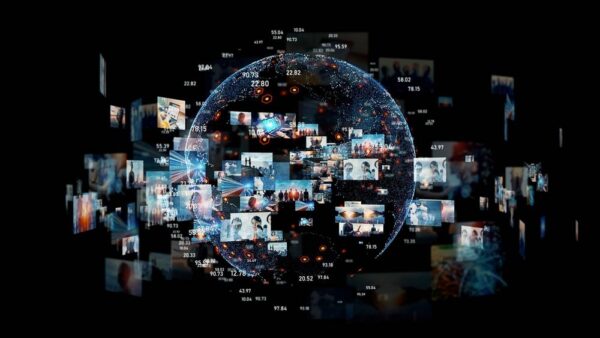 TL;DR: Media intelligence helps organizations track, analyze, and respond to media coverage across TV, radio, podcasts, and online video. This blog explains how media intelligence tools work, outlines real-world use cases, and shows how businesses benefit from improved brand monitoring, PR measurement, and competitive insights.
TL;DR: Media intelligence helps organizations track, analyze, and respond to media coverage across TV, radio, podcasts, and online video. This blog explains how media intelligence tools work, outlines real-world use cases, and shows how businesses benefit from improved brand monitoring, PR measurement, and competitive insights.
- Definition and purpose of media intelligence
- Key features of media intelligence solutions
- Example of a product launch using media intelligence
- Use cases: brand management, PR tracking, crisis response, competitive research
- Benefits include faster insights, better planning, and stronger communication
- Tips for choosing the right media intelligence services and tools
Media intelligence is the process of collecting and analyzing content from various media sources. It helps teams understand how people are talking about their brand, products, or competitors. In this article, we’ll specifically focus on TV, radio, podcasts, and online video.
In this blog, we explain what media intelligence is, how it works, and highlight real-world ways it’s used. We’ll also explore the tools and services that support it. Finally, you’ll learn about the benefits it offers for communications, marketing, and leadership teams.
What Can Media Intelligence Tools Do?
Media intelligence tools include features like transcription, keyword tracking, and alerts. Some also offer deeper analytics, including reach and audience demographics. These tools give teams a clearer picture of their public image.
Key Features of Media Intelligence Solutions
Media intelligence services often include:
- Media monitoring: Tracks mentions of brands, people, or topics across different channels, including TV, radio, podcasts, and online platforms.
- Transcription and tagging: Converts spoken content into searchable text and organizes it with helpful labels.
- Clip Editing: Hones in on where a specific mention shows up.
- Custom dashboards and reports: Let users create visuals and summaries that highlight trends and comparisons.
- Real-time alerts: Notifies users of new mentions, helping teams act fast when needed.
Some services also offer human support. These can include onboarding, custom keyword help, and training to make sure users get the most out of the platform.
A Media Intelligence Example
Imagine a company launching a new product nationwide. They use media intelligence tools to:
- Track brand mentions before, during, and after the launch
- Compare their coverage to competitors’ brands
- Analyze audience demographics and identify if there are new opportunities
- Identify which cities, networks, or podcasts talk about them the most
- Create a detailed report for leadership showing campaign reach and impact
Using this information, the marketing team can adjust messaging in real time. They can easily address any unexpected issues and highlight areas where the campaign performed well. Media intelligence allows teams to make smarter decisions with evidence instead of guessing.
Common Use Cases for Media Intelligence
Brand Monitoring and Reputation Management
Media intelligence helps companies monitor how their brand appears in the media every day. If something negative is being said, teams can act quickly to respond. If coverage is positive, they can leverage it more widely through their own channels. This builds stronger relationships with customers, the press, and the public.
Public Relations and Campaign Tracking
Public relations teams use media intelligence to see where their stories appear and how people are reacting. They can measure the number of media pickups and calculate the reach of their messages. This helps show the value of PR efforts and improves future planning.
Competitive and Market Research
Media intelligence gives teams a window into how their competitors are being talked about. Companies can learn what strategies others are using, which markets they are targeting, and how their messaging compares. This type of media business intelligence is useful for benchmarking and planning.
Crisis Response and Issue Tracking
When a crisis hits, early detection is critical. Media intelligence tools alert teams to spikes in coverage, changes in sentiment, or negative mentions. This early warning system allows for a faster and more informed response, helping protect the company’s image.
Executive and Investor Communications
Executives and investor relations teams rely on media intelligence. It’s crucial for understanding how their decisions and public statements are being received. If an earnings call or leadership change is being discussed in the media, it’s important to know how it’s framed. Media data helps ensure consistent and effective messaging.
Benefits of Media Intelligence
The benefits of media intelligence include:
- Stronger brand visibility with ongoing tracking of media coverage
- Clear metrics for PR campaigns to evaluate performance and refine strategy
- Competitive insights to identify risks and opportunities in the market
- Faster crisis response with instant alerts and sentiment analysis
- Better communication supported by real data and trends
- More informed leadership decisions based on media trends and public reaction
- Enhanced planning and messaging with evidence of what works and what doesn’t
- Stronger media relationships by identifying key journalists and channels that matter most
How to Choose Media Intelligence Tools
Here are a few things to consider when selecting a media intelligence provider:
- Coverage: Make sure it tracks all the channels you care about, including TV, radio, podcasts, and online video.
- Search quality: Look for tools that make it easy to find mentions by keyword, time, or channel.
- Analytics: Choose a platform that offers built-in dashboards, power search terms, and clip editing.
- Alerts: Real-time updates are critical for crisis management and rapid response.
- Support and training: Helpful onboarding and expert assistance make a big difference, especially for large or complex monitoring needs.
Leverage Media Intelligence with TVEyes
Media intelligence helps organizations understand and respond to how they are seen in the media. It supports brand tracking, campaign measurement, competitive research, and crisis response. With the right tools and services, teams can work smarter, act faster, and make decisions based on real-world data.
Explore how Insight by TVEyes can enhance your media monitoring experience.



